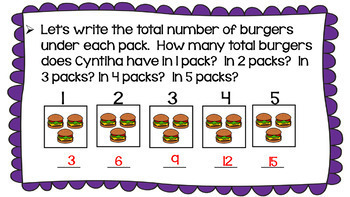(Complete Module 1) Eureka Math (Engage NY) PowerPoint Slides
Creative Classrooms 3
396 Followers
Grade Levels
3rd, Homeschool
Subjects
Resource Type
Standards
CCSS3.OA.A.1
CCSS3.OA.A.2
CCSS3.OA.A.3
CCSS3.OA.A.4
CCSS3.OA.B.5
Formats Included
- Zip
Pages
800 pages
Creative Classrooms 3
396 Followers
What educators are saying
I was searching for a resource to help with presentation of the Eureka lessons and this fits the bill perfectly!
Description
These fun and engaging slides will help you keep your head out of the manual to interact with your students. They are great for visual learners and go along with the Eureka (Engage NY) lessons.
These PowerPoints include every lesson in Module 1. Included are the teacher dialog, examples and solutions, I Can Statements, debriefs, and vocabulary.
Our goal is to keep math engaging for the student and teacher. This resource will change the way you teach math! Please provide feedback. We would love to hear from you.
We did not write this curriculum but created these PowerPoint slides to correlate with and supplement Eureka Math (Engage NY). Eureka Math (Engage NY) is a free curriculum that can be found at GreatMinds.org or www.engageny.org.
Total Pages
800 pages
Answer Key
N/A
Teaching Duration
1 month
Report this resource to TPT
Reported resources will be reviewed by our team. Report this resource to let us know if this resource violates TPT’s content guidelines.
Standards
to see state-specific standards (only available in the US).
CCSS3.OA.A.1
Interpret products of whole numbers, e.g., interpret 5 × 7 as the total number of objects in 5 groups of 7 objects each. For example, describe a context in which a total number of objects can be expressed as 5 × 7.
CCSS3.OA.A.2
Interpret whole-number quotients of whole numbers, e.g., interpret 56 ÷ 8 as the number of objects in each share when 56 objects are partitioned equally into 8 shares, or as a number of shares when 56 objects are partitioned into equal shares of 8 objects each. For example, describe a context in which a number of shares or a number of groups can be expressed as 56 ÷ 8.
CCSS3.OA.A.3
Use multiplication and division within 100 to solve word problems in situations involving equal groups, arrays, and measurement quantities, e.g., by using drawings and equations with a symbol for the unknown number to represent the problem.
CCSS3.OA.A.4
Determine the unknown whole number in a multiplication or division equation relating three whole numbers. For example, determine the unknown number that makes the equation true in each of the equations 8 × ? = 48, 5 = __ ÷ 3, 6 × 6 = ?.
CCSS3.OA.B.5
Apply properties of operations as strategies to multiply and divide. Examples: If 6 × 4 = 24 is known, then 4 × 6 = 24 is also known. (Commutative property of multiplication.) 3 × 5 × 2 can be found by 3 × 5 = 15, then 15 × 2 = 30, or by 5 × 2 = 10, then 3 × 10 = 30. (Associative property of multiplication.) Knowing that 8 × 5 = 40 and 8 × 2 = 16, one can find 8 × 7 as 8 × (5 + 2) = (8 × 5) + (8 × 2) = 40 + 16 = 56. (Distributive property.)





